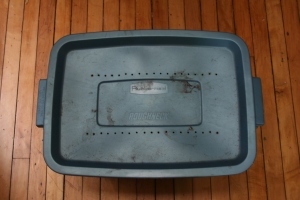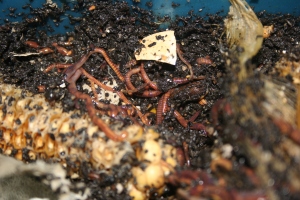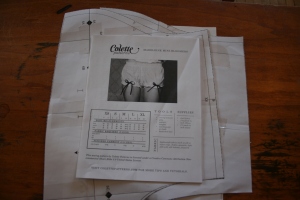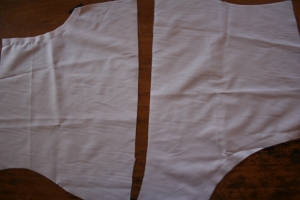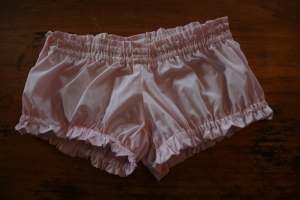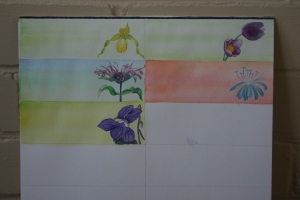Water is the universal solvent. Given enough time, water will pull just about any molecular compound apart into its component pieces. Water is polar. The H20 molecule is configured in such a way that negatively charged electrons spend more time around the oxygen molecule than around the hydrogens, resulting in a partial negative charge on the oxygen end and an opposing partial positive charge on the hydrogen end. This polarity allows the H2O molecule to viciously tear apart any compounds held together by electrostatic forces, and contributes to water’s great solution capabilities.
But as any quantum physicist will tell you, processes that operate on a small scale don’t necessarily work on a large scale. In the macro world of human interaction, polarity rarely makes for a good solution. The questions we face as human beings are virtually never “either or”; rather, we should be asking “how much of each”.
Polarity has huge, HUGE implications for so much of what we do.
On an interpersonal level, it can make otherwise pleasant meandering conversations of mutual discovery into heated debates that leave neither party satisfied, nor any wiser than they were before. When a conversation becomes an exercise in trying to convince one another that “this is right and that is wrong”, when you start to feel invested in making your point and sticking to it, everybody misses out on an opportunity to refine their opinions and incorporate new information. Debate is important – I’m not advocating to end it, and there is definitely a time and a place for trying to convince someone of a particular view (like when they’re obviously WRONG, and you know that you’re RIGHT and they’re just being STUPID) – but what would debate look like if it were a little gentler? How would the face of debate (formal or informal) change if we shifted from an “either-or” approach to a “to-what-degree” approach?
On a political level, polarity results in a messy kind of partisan system that doesn’t really give anyone what they want, and discourages both collaboration and the moderate voice. Polarization hampers the policy-making process, and ultimately results in less and lower quality legislation. What’s worst, is that it can become a reinforcing loop: polarization among political parties encourages polarization of the electorate, which encourages parties to continue taking the extreme stance, drowning out the moderate voices and ultimately representing only the loudest and most zealous. When you add in the financial support of corporate entities, which makes it harder for independents to have a fighting chance of election, you are likely left with two or three ideologically dissimilar parties who are committed to an extreme position.
Polarity in the political sphere affects the judicial system as well. A polarized government in which the majority party has a well-defined ideological stance will be more likely to appoint like-minded judges. In Canada, judges are appointed to the Supreme Court of Canada with no input from opposition leaders, allowing majority governments to stack the courts with judges who will support them. The superior courts of the provinces are also federally appointed, and many feel that the recent appointment of Vic Toews to the Court of Queen’s Bench in Manitoba was just such a “stacking” move. Very recently, Prime Minister Harper appointed Justice Marc Nadon to the Supreme Court of Canada in what seems to be another impartial move – the appointment was overturned in an unprecedented review by the Supreme Court of one of its own members. You can read about it here and here.
I am by no means an expert on political systems, and the above discussion is pretty off-the-cuff. But polarity in politics has been on my mind lately – my involvement in this year’s UWSA election, and in particular running for a contested position, got me thinking about how and why partisan politics develops. Several studies have suggested that political polarization increases voter interest and engagement – an example that can be brought close to home for university students in Winnipeg when we look at the differences in the UWSA (mainly uncontested, ~9% voter turnout) and UMSU elections (mainly contested, ~22% voter turnout). I have to wonder, though – did the University of Manitoba end up with a better student council, or just a louder one? *Disclaimer #1: I happen to think this year’s UWSA board is pretty great, though it would have been terrific if more students had run & voted!* On the other hand, several more studies have suggested that polarization alienates voters and, due to confrontational dynamics between parties, decreases public trust in government (the Wikipedia page on polarization (politics) is pretty well written and has lots of sources – which I have not read through).
To bring this back around and wrap it up: though there are issues that I feel very strongly about, and wouldn’t be excited to budge on, in general the answer to most questions is “a little bit of both”. Polarized and polarizing debates/elections/what-have-you don’t seem to be particularly useful in a complex world where multiple interests and viewpoints have to be taken into account. One size rarely fits all, and I would love to see a shift away from polarity on all kinds of levels.
*Disclaimer #2: Sticking to your point and trying to convince someone that you are right and they are wrong is an important skill, and a good thing to do when they are WRONG, like if they think climate change isn’t happening or that racism is no big deal*
*Disclaimer #3: I am aware that the chemistry metaphor doesn’t quite hold up – I did it for the sake of the “solution/polarity” pun and I REGRET NOTHING*



